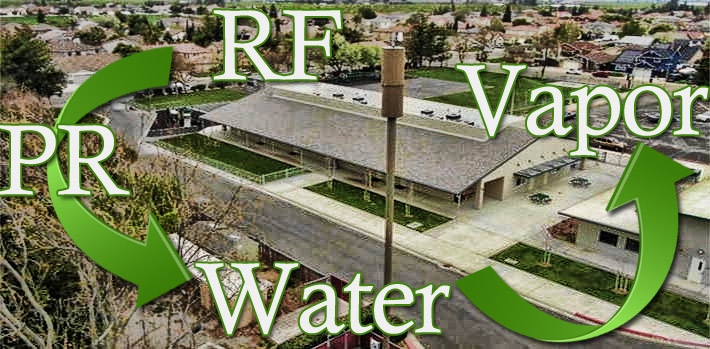
Multiple industry professionals believe that Sprint should not have removed the small cell site following pressure from some residents that it could be the cause for four students’ cancer. Testing will be taken to see if there are unacceptable levels of carcinogen TCE in the soil and in soil vapors.
When four children were diagnosed with cancer at a San Joaquin County, Calif. elementary school earlier this year, parents – rightfully concerned – went for the usual maligned suspect – RF radiation from a cell tower on a school campus.
However, after the Ripon School District tested the RF levels at Weston Elementary school three times, and found exposure levels to be considerably below federal levels, concerned parents hired an ‘electromagnetic radiation specialist’ who said his testing showed levels “a hundredfold” higher.
That increased their level of concern, but an investigation by Wireless Estimator and LBA Group identified that the testing results appeared to be flawed.
Investigatory emphasis changes from RF to water and vapor
Parents then expanded their focus and had CBS13 dig through decades of water testing and they found a history of chemicals linked to certain cancers in Ripon’s groundwater, irrigation and drinking water wells.
The city insisted that Ripon’s water is safe and the levels of the chemicals in drinking water remain below the legal limit. The city’s required public notices had “missing data, inaccurate information, and years when Ripon skipped required testing for certain chemicals,” according to CBS13.
Ripon shut down one of its wells in 2018 after its testing had found chemicals at 90% of the legal limit, one of them being Trichloroethylene (TCE), a chemical used by Nestle to decaffeinate coffee in its former Ripon plant. They were aware of the high levels for four months prior to shutting it down.
Although the level of TCE was required to be put in the annual report, Ripon said that it was inadvertently left out, but was below the legal limit.
Nestle reported increasing TCE concentrations in the well, as required in a cleanup order, dating back over a decade. Their 2017 annual report says levels “decreased sharply” when the well was temporarily deactivated from 2015 to 2017 but reached their “historical maximum” just months after it was reactivated.
On Friday, CBS13’s investigative reporting found that students could have also been exposed to TCE while inside their classroom or playing on school grounds since TCE is also linked to health problems when individuals are exposed to it through soil vapor.
They said that according to the California Office off Environmental Health Hazard Assessment, living or working above contaminated soil or groundwater can put you at risk.
Ripon did a soil sample report to isolate contaminants after RF concerns were aired, but according to CBS13, the consultant was not informed by the city that he should test for TCE.
The city said it hasn’t tested for TCE vapor since 2006 when TCE vapors proved to be below safety standards at the time.
However, the EPA recently updated those levels due to new studies regarding the health effect of the vapor on pregnant women and babies. Today, the levels found in 2006 would be above the current screening levels, CBS13 reported.
Nestle will be doing vapor testing out of an abundance of caution to ensure that TCE is not contributing to student cancers.
Decommissioning Sprint cell tower might have been premature
After residents called for the removal of the cell tower, Sprint acquiesced, causing a number of industry professionals to question whether it could cause other communities to demand the removal of existing structures.
It received traction, and industry media noted that parents in Colorado and Tennessee were concerned about the possibility of their children getting cancer if there was a cell tower on or near their school.
RF expert Lawrence Behr, CEO of LBA Group, was taken back when he learned that Sprint caved in to community pressure and believes the carrier shot itself in the foot.
“I think the cell siting community must be shuddering – those who know enough to understand the problem. This was a mini-macro or a small cell, of which vastly more will be needed as 5G variants roll out. The crazy thing is the schools are just the kind of places that need capacity,” said Behr.
An executive of a major tower consolidator that requested to remain unnamed said, “I can understand Sprint wanting to appease the parents in this highly charged situation where children actually have cancer, but it also sends a message that will be used by other communities looking to keep cell sites off of or near their campuses.”
FCC Commissioner Brendan Carr informed Wireless Estimator that he believes these are isolated incidents and that there is considerable information available to identify that cell sites are safe.
‘Ill advised publicity stunt’ may have backfired
A site acquisition professional questioned whether Sprint consenting to the parents’ demands was the right public relations move since it would be difficult for them to logically decline other removal requests.
“If they say no to any other school where there is a concern their insincerity will be a PR nightmare. It can’t be laudable one day and deplorable the next. Although it’s pure conjecture on my part, any good publicity they get could be beneficial as regulators review their merger with T-Mobile,” he said.
John Paleski, President of Subcarrier Communications believes that before removing the site Sprint should have been more “cautious and circumspect when reacting to the RF concern of the moment.”
“These ‘concerns’ have come and gone throughout the past several decades. The telecom industry and the effects of RF have been studied for nearly 100 years. It has consistently been deemed ‘safe’ by all relevant U.S. and International agencies. Nevertheless, the telecom industry is rife with pseudo-engineers willing, for a fee, to suggest the very opposite. Sprint’s actions in removing its tower from the school property was nothing more than an ill-advised publicity stunt designed to deflect the concerns of a highly emotional public,” Paleski said.
















